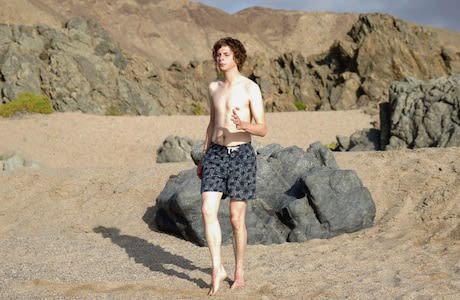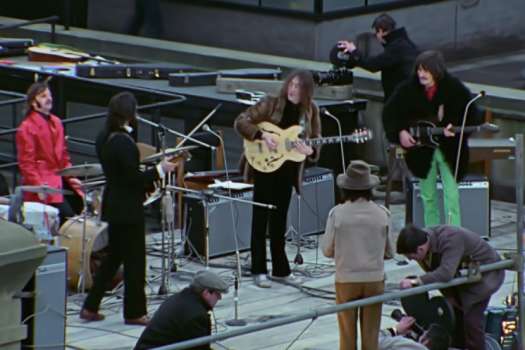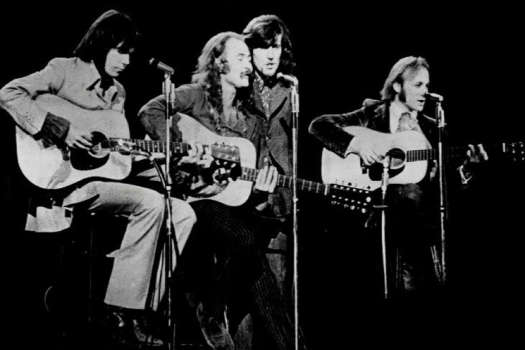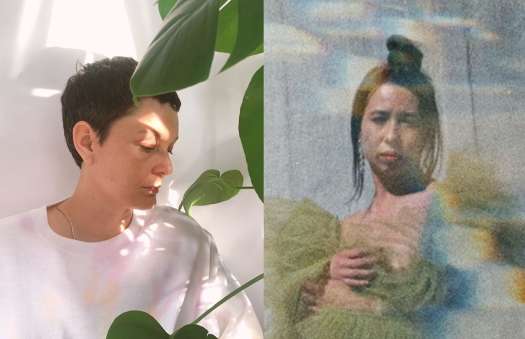Crystal Fairy (the first of two Sebastián Silva movies featuring Michael Cera in 2013) happened entirely by chance. While Cera was staying at the Silva home in Chile, learning Spanish and preparing to film Magic Magic, funding was delayed, leaving the director to pull out an old, partially realized story based upon an experience he'd had years prior, doing hallucinogens on a beach with an American tourist named Crystal Fairy.
Filmed sequentially and using mostly improvised dialogue, this series of long takes and conversations in the roundabout form of a road trip movie is essentially a biting, oft-hilariously incisive critique of American youth. Jamie (Cera), a shaggy-haired, pretentious drug addict visiting Chile, invites a girl he meets while stoned — the overly affected, hippie-dippy Crystal Fairy (Gaby Hoffman) — to take a trip with him and his trio of Chilean buddies, Champa (Juan Andrés Silva), Lel (José Miguel Silva) and Pilo (Augustín Silva), on a quest to acquire the legendary San Pedro cactus.
Jamie is a tool; he prattles on endlessly about the quality of drugs he's ingesting, when not doling out indecipherable undergraduate rubbish. Champa, Lel and Pilo are patient with their American guest, ignoring his tendency to talk about himself rather than ask questions about them, and not complaining when he leans his seat back in the car, imposing on the already limited legroom of the back seat. They also keep him in check, insisting that they take Crystal Fairy on their trip even though Jamie's sober realization of an error in judgment leaves him wanting to ditch her.
While there are key moments throughout that make clear the cultural distinctions in youth, Silva's approach is restrained and observational. The camera follows these five characters around, documenting their interactions organically, capturing Jamie's tendency towards controlling behaviour and entitlement, freaking out whenever he's not the focus of attention or doesn't get his way. Since these moments stem from the character rather than overtly forced situations, it's easier to accept and appreciate the obvious slam of American ethos and simultaneous praise of Chilean culture.
The divide is most evident when a conversation about deepest fears reveals sincere anxieties about mortality, uncertainty and the ill intentions of others in Champa, Lel and Pilo, while Jamie remarks that sharks are his biggest fear. Crystal Fairy, after calling Jamie shallow for suggesting his biggest fear is sharks, goes on a rant about people not realizing their freedom, which is obviously just a load of prescribed hippie crap she stumbled onto in a book about chakras.
This scene, along with the anticlimactic consumption of the hallucinogenic cactus, highlights the inherent disconnect in these characters. Jamie and Crystal Fairy are obviously on some sort of quest to determine and assume an identity external to the self, not realizing that their biggest problem is an inability to open up refrain from image posturing. They're so quick to assume the signifiers of an identity they perceive as being ideal without actually looking internally and realizing they are the same people no matter where they go in the world.
It's a rather astute observation handled quite carefully and effectively in a film that never really has any sort of climax or excitement beyond the casual, unkempt full-frontal nudity of Gaby Hoffman, who some might remember as Macaulay Culkin's little sister in Uncle Buck.
(Mongrel Media)Filmed sequentially and using mostly improvised dialogue, this series of long takes and conversations in the roundabout form of a road trip movie is essentially a biting, oft-hilariously incisive critique of American youth. Jamie (Cera), a shaggy-haired, pretentious drug addict visiting Chile, invites a girl he meets while stoned — the overly affected, hippie-dippy Crystal Fairy (Gaby Hoffman) — to take a trip with him and his trio of Chilean buddies, Champa (Juan Andrés Silva), Lel (José Miguel Silva) and Pilo (Augustín Silva), on a quest to acquire the legendary San Pedro cactus.
Jamie is a tool; he prattles on endlessly about the quality of drugs he's ingesting, when not doling out indecipherable undergraduate rubbish. Champa, Lel and Pilo are patient with their American guest, ignoring his tendency to talk about himself rather than ask questions about them, and not complaining when he leans his seat back in the car, imposing on the already limited legroom of the back seat. They also keep him in check, insisting that they take Crystal Fairy on their trip even though Jamie's sober realization of an error in judgment leaves him wanting to ditch her.
While there are key moments throughout that make clear the cultural distinctions in youth, Silva's approach is restrained and observational. The camera follows these five characters around, documenting their interactions organically, capturing Jamie's tendency towards controlling behaviour and entitlement, freaking out whenever he's not the focus of attention or doesn't get his way. Since these moments stem from the character rather than overtly forced situations, it's easier to accept and appreciate the obvious slam of American ethos and simultaneous praise of Chilean culture.
The divide is most evident when a conversation about deepest fears reveals sincere anxieties about mortality, uncertainty and the ill intentions of others in Champa, Lel and Pilo, while Jamie remarks that sharks are his biggest fear. Crystal Fairy, after calling Jamie shallow for suggesting his biggest fear is sharks, goes on a rant about people not realizing their freedom, which is obviously just a load of prescribed hippie crap she stumbled onto in a book about chakras.
This scene, along with the anticlimactic consumption of the hallucinogenic cactus, highlights the inherent disconnect in these characters. Jamie and Crystal Fairy are obviously on some sort of quest to determine and assume an identity external to the self, not realizing that their biggest problem is an inability to open up refrain from image posturing. They're so quick to assume the signifiers of an identity they perceive as being ideal without actually looking internally and realizing they are the same people no matter where they go in the world.
It's a rather astute observation handled quite carefully and effectively in a film that never really has any sort of climax or excitement beyond the casual, unkempt full-frontal nudity of Gaby Hoffman, who some might remember as Macaulay Culkin's little sister in Uncle Buck.




